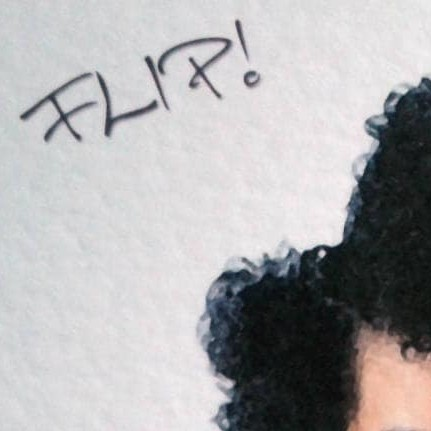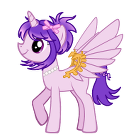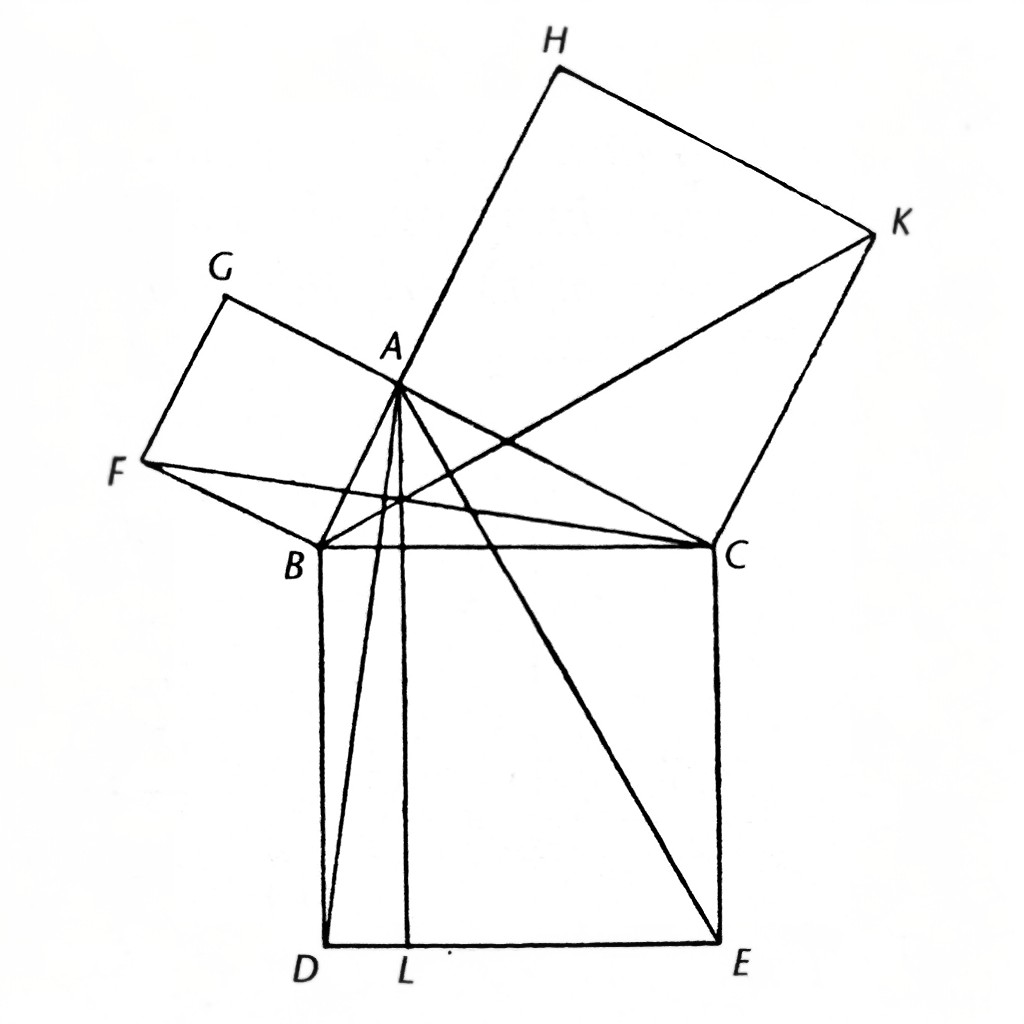Hello, apparently hanging out in Lemmy inadvertently makes you thinking about using Linux. I am planning to install Linux Mint cinnamon on an older laptop, which I want to bring to LAN Parties. From what I read I can just format my C:\ windows disk, install Linux via bootable drive and from what I understand, proton is basically included when installing steam after setting up my new Linux OS? Thanks for your comments:)
Yup! Install Steam (with your package manager!) and play. Nothing to it.
Enjoy!
Thanks! I make sure to use the package manager, even, as of now, I’m not 100% what that means but I will find out
There is a GUI, but I prefer the terminal:
sudo apt update sudo apt install steam“Update” fetches the latest package information, and “install steam” does exactly what you think it does :)
I will probably use your approach, because the windows like gui should only help me transition. Getting to know how to use the terminal is my next step. Thanks!
Careful here. Absolutely start learning bash, but one of the points of Mint is that everything a normal user needs to do can be done through a settings gui. Don’t feel bad for reaching for the gui if you need to get something done and don’t have time right then and there to learn. Have fun!
In the program menu (“Start” menu), search for Software Manager. It’s basically an app store.
Just as a note, I believe you still need to tick the “Enable Steam Play for all titles” in Steam settings to allow it to be used with non-verified games.
Thanks!
It’s called Software Manager in Mint. It’s in the start menu. It’s basically like an app store, but without the surveillance and ads. Just type steam in the search field and click install. Really couldn’t be easier.
Since you have LAN parties in mind, be sure to check this list to know what games are (or are not) well supported by Proton under Linux.
Proton is the compatibility layer that allows Seam games developed for Windows to run under Linux. Some games, unfortunately, may have problems that cause you to be left out.
Excellent choice of a starter distro. I hope you have fun
Yes, you flash the installation system onto the USB stick, boot the laptop from this USB and then it should be a simple graphical installation wizard. There are plenty of tutorials online and even if all computers can be slightly different it is basically the same scheme.
Once Steam is installed Proton is automatically downloaded for games that by default use it. Games that are not officially using Proton can have it enabled in Steam’s game properties. Most would point you to https://protondb.com, site showing what games you can suspect to work.
You don’t need to worry about formatting. The installer can do that for you as part of the process. Just make sure you merge all of the existing Windows partitions into one, then let the installer partition as needed. I’m not 100% sure about the Steam question, but I think I remember reading somewhere that this is the case.
Keep in mind, Linux isn’t magic. If the hardware sucks, the hardware sucks. Games can take a lot of resources. Just make sure your old LAN party laptop can handle the games you want to play on it.
Side note: Mint Cinnamon is a perfect choice for a starter distro.
I made sure that only the OS is on C. That’s my MO since I had some bad experiences concerning windows installations (my first PC was running Windows ME)
Welcome to the club!
Just want to mention that "C:" is a Windows-specific convention for identifying hard disks. Linux doesn’t have quite any concept of a “C:\ drive.” You’ll of course still have your OS installed on the same disk that today Windows calls "C:", but on Linux it’ll be (and I’m oversimplifying a little bit here) “/”.
I’m a little bit jealous because I can’t start learning such things for the first time like you will be soon. Ha!
My advice: don’t feel like you have to learn it all at once. Don’t feel bad about just accepting the defaults that the installer suggests where you don’t know what to do otherwise. If the command line intimidates you (we were all there once) use the gui tools exclusively as much as you like. Some day you might start to feel limited sticking with gui tools. (Or maybe for your particular purposes, the guis will always be perfect.) Until you do start to feel like you want to learn more about such things for your own sake, don’t let anyone tell you you’re doing it wrong by using the easy way.
(This from someone who does basically everything from the terminal. Lol!)
And don’t be too afraid to break things. Breaking things is arguably the best way to learn. And do feel free to reach out to friendly communities for help when you need it. It’s likely that if something has gone wrong (which is pretty unlikely with Mint), you’ll need to do some terminal stuff to fix it, but people can help you out with that if you ask. :)
Godspeed!
Breaking things is arguably the best way to learn
Hee hee, some may agree with you. jumped into Gentoo very early and hasn’t stopped breaking things yet. Sometimes for fun, sometimes 'cause some distro maintainer type did something horrible .
I definitely support “Just try things, see what breaks, then learn to fix it” as a learning method. Not necessarily for everycritter and not necessarily as a sole learning method but certainly it can be many fun and very productive, sometimes in ways that other methods would not be.
He didn’t imply that, he said he wanted to format C:\
Why is it oversimplifying to say the disk will be called / in Linux?
I just meant with the
C:comment that OP shouldn’t expect it to still be calledC:after he’s wiped Windows and is running Linux.As for the oversimplification comment:
First off,
C:(orD:,E:etc) doesn’t refer to a disk in Windows. It refers to a partition. So it’s entirely possible (and not terribly uncommon) to have a single disk with both aC:and aD:on it.It’s very typical for a Linux installation process to (by default, if you don’t tell it to do something else) make separate partitions on a single disk for
/and/home. (Plus there’s usually an extra EFI boot partition on most modern desktop/laptop systems. And a swap partition.) In such a case, you couldn’t really describe where “the disk” (that was formerly calledC:on Windows) was mounted in the mindset of conflating “partition” with “disk”. What was previously “the disk”C:(again,C:isn’t a disk, it’s a partition, but Windows makes it easy to conflate the two) is now split in two (or three or more) and mounted not just on/but also on/home(and maybe on/bootas well, and maybe one partition isn’t mounted on the main abstract root filesystem)./and/homearen’t really even partitions (let alone disks). They’re mount points in the slightly more abstract root filesystem.The most obvious software representation on a typical Linux system of the main internal disk in that machine would probably be something like
/dev/sdaor/dev/nvme0. The partitions would likely be something like/dev/sda1//dev/sda2/etc or/dev/nvme0p1//dev/nvme0p2/etc. Also, the “filesystem” on the partition is arguably a subtlely a distinct concept from the block device that is the partition. And where that filesystem is mounted is yet another distinct concept. (Another subtlety I haven’t mentioned is the distinction between the device in the/dev/directory/filesystem and the kernel representation of the device with the device major/minor numbers.)A typical Windows install kindof conflates a lot of these probably a lot more so than Linux does. But I didn’t want to be like “akshuly things are a lot more complicated than that and you have to understand a bunch of Linux kernel internals to understand all the ways in which you’re wrong so you can install the holy ‘Guh-noo Plus Linux’.” All that is stuff that OP will learn by installing and using Linux. And if OP’s going with Mint, it’s probably not necessary to really understand all of that before starting the install process.
And technically OP doesn’t really need to understand that the main disk won’t be called
C:after switching to Linux. Probably. (I don’t think I’ve ever installed Mint. So I don’t know for sure, but from what I’ve heard about it, I’d be surprised if the installation process had much of a learning curve.) But I told OP anyway. So there. :DOkay thank you. I feel like it’s a lot of information here that is about, like you say, how complicated abstract and advanced it is, with the devices, kernel representations and mount points.
There must be a better way of just explaining how the root fs works, because I still don’t understand anything.
It really doesn’t feel like comparing it to windows gives any favours though, maybe explain use cases, like where would the user save downloads, where would you install apps?
I’ve used Linux a little. Right now it’s modernized enough for me to not learn the file system. But I remember in old times when I ran Ubuntu I just crammed files in a folder and struggled a lot with it
Ok. Lessee.
Just to quickly explain first off:
- A disk is just a big collection of bytes. A 100GB disk has 100 billion(-ish) bytes. Each one has an index. The first byte has index “0”. The second has index “1”. There’s a byte 8,675,309. Each byte has a particular value at any one time. The computer can set the value of any byte to any value. (It could set byte 8,675,309 to
01100001and later it can reliably be read back from the same index as the same value, until it’s changed to a different value.) - A disk can be divided into partitions. Basically you (or rather a tool you use) writes data to a location near the beginning of the disk that says “treat this disk as multiple separate devices. The first starts at byte X and ends at byte Y, the second starts at Y and ends at Z, etc.”
- When you plug a disk into a Linux computer (on most modern full-featured desktop/laptop Linux systems, though maybe not on, for instance, some embedded systems) a new “file” appears in
/devfor the disk along with more files for each of the partitions on the disk. For instance, an external USB hard drive with three partitions might show up as/dev/sdaand the partitions as/dev/sda1,/dev/sda2, and/dev/sda3respectively. (Ok. Technically the things in/devare only files in some senses. They’re technically “devices”. But they have paths like files do and they can be read from and written to like files.) - If you want to, you can read and write to those partitions or to the disk directly as you would read or write any file. You can open it in a text editor, for instance. You might get lots of random-looking broken characters if you do that, and god help you if you try to save over it, but you can. If you read from a disk or partition, it just returns all the bytes in the disk or partition starting from the first (or from whichever index your application asks it to start from.)
- A “filesystem driver” knows how to interpret the bytes on a partition as files and directories.
- If you want to know what device in
/deva file lives on and what filesystem driver is used for that device, themountcommand just typed into any bash terminal will tell you. It’ll output rows likeon type (...). If you read/write a file or list a directory, it’ll pick the entry in themountoutput that has the longestthat is a prefix of the requested file. Theis the “file”(/device) in/devthat corresponds to the parition on which that file is encoded. `` is the name of the filesystem driver. So, for instance, if I have an entry/dev/sdb3 on /mnt/pringles type ext4 (...)and I read a file named/mnt/pringles/apple/unicorn/potato.txt(and if there are no entries in themountoutput with longer paths that are still prefixes of the requested file path), the kernel will ask theext4filesystem driver to please look at the partition/dev/sdb3and interpret that partition’s contents as a hierarchical filesystem to find and return the contents of the file at the pathapple/unicorn/potato.txtrelative to the root of the filesystem encoded on the/dev/sdb3partition. - There are other filesystem drivers that don’t deal with disks. Some like
tmpfsstore data in RAM only (and RAM isn’t intended to be persistent, so you can’t expect anything in a tmpfs to last reliably through a reset.) Others likeprocfsdon’t look at a disk but make these ephemeral files that basically decide what data to return when read from at the time they’re read from. (Files inprocfsfilesystems usually expose data about the Linux system. Like, for instance, what processes are currently running.)
Now, the question of where files should go is… kinda unrelated to the above. Files that are system-wide configuration should go in
/etc. Files that are system-wide executables should generally go in/bin,/sbin,/usr/bin,/usr/sbin, and/usr/local/bin. Anything your own user downloads/creates should go in/home/$username. Etc. More specifics of all this here.It can be useful to make decisions regarding what disk/partition a particular directory like
/homelives on. But whether/homeis on the same partition with/etcand/binand/varetc or whether it’s on a different partition (and both of these options are quite common), your users’ files should go somewhere in/home.To elucidate a little more, if you decide to put your
/homeon the same partition as/binand/etcand/varand such, you’ll have an entry in yourmountoutput like/dev/sda2 on / type ext4but nothing with a `` of/home. If you decide to put/homeon a separate partition, you’ll have your/dev/sda2 on / type ext4entry plus another entry like/dev/sda3 on /home type ext4.So which partition does a file go on when you write a file to
/home/keenflame/document.txt? Well, in the first case, it’d be on the partition Linux calls/dev/sda2. In the second case it would be written to the partition that Linux calls/dev/sda3.- A disk is just a big collection of bytes. A 100GB disk has 100 billion(-ish) bytes. Each one has an index. The first byte has index “0”. The second has index “1”. There’s a byte 8,675,309. Each byte has a particular value at any one time. The computer can set the value of any byte to any value. (It could set byte 8,675,309 to
Just make sure you back up any important data before wiping your own hard drive. And yeah, Steam handles a lot of the weirdness of running windows only games pretty well automatically.
On C I only have my windows OS , data is on D. I think that should be enough precaution? If course I backed up everything but I don’t plan on backup everything again. Or do you think it could “leech”?
Yes, via your package manager install Steam. You’ll have to go into Steam settings to activate compatibility with proton if I remember well
Oh and one additional question, is it recommended to uninstall all programs I had under Windows, so I won’t have to deal with "ghost files "? As to use windows helping me remove installation data? I have my laptop partitioned into C and D, where in D I have all my documents plus installed programs, C is solely for the OS.
nope, don’t even format it. just plug in the usb and pick the option that wipes your drive.
That’s even easier than I imagined, thanks
I wouldn’t worry about wiping anything, files remaining on the second disk aren’t going to affect you.
Assuming I’m understanding you correctly (I think I am: “ghost files” would be files of the old filesystem read and kept by the new one?) No, that’s unnecessary unless you have data you specifically want unrecoverable, in which case you’ll want a ‘file shredder’ or srm type tool to handle that. Other than that you’ll probably not be using any filesystem format Windows offers, so it also won’t be recognizing any Windows files even if such a thing would otherwise be possible.
As for your main post, you seem to have the right idea. Steam recognizes that Windows games won’t run natively on a Linux system and will either “automatically run with a compatibility tool (Steam Play)” (or something like that) or refuse to launch/install the thing until you configure it to run everything non-native with Proton by default (which is a checkbox in the normal settings menu, not anything weird or buried).
…Also sometimes it just launches Wine? At least for me? That’s kinda weird, honestly, but I set up my systems in weird ways so that may just be a me problem 😅
Simply put: I think you’ll be fine just not worrying about anything and going directly to your “boot from install/live media” step and not worrying about anything else unless there’s a problem… at which point you come yell at us and we help you fix it ;P
Thank you for your extensive answer, I feel confident now to do the “leap of faith”
Good practice is to backup your D drive, before installing to C drive.
In case something goes wrong, etc.
Sounds like you’ve gotten good answers about your formatting question. For the steam proton question, the answer is that yes, steam installs it automatically. You might have to mess with the proton version for specific games, so check https://www.protondb.com/ for your game if it doesn’t work immediately.
Congrats on trying out Linux! I hope you enjoy it! I’ve never used Mint myself (I don’t like ubuntu-type package management), nor the Cinnamon desktop (although I’ve heard good things), but that’s part of the beauty of linux, there’s so much to try! Mint is definitely a good starter distro, but if you find you enjoy messing around with it, you might consider a bit of distro-hopping.







